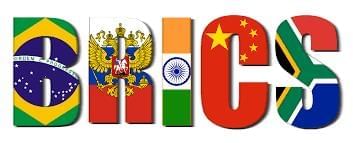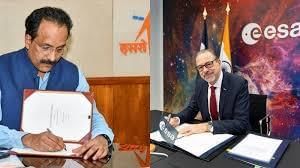International Cooperation – BRICS space initiatives, ESA-ISRO Collaborations | Science & Technology for UPSC CSE PDF Download
BRICS Space Initiatives
BRICS is a group of countries: Brazil, Russia, India, China, and South Africa. It has grown to include more nations like Egypt, Iran, UAE, and Saudi Arabia. These countries work together on space projects to share knowledge, reduce gaps in technology, and use space for good things like helping with disasters, farming, and watching the environment. India, through its space agency ISRO, plays a big role in leading these efforts. This helps India build stronger ties with other countries and improve its own space skills.
Background and Main Goals
BRICS space work started to help emerging countries team up on space without depending too much on big powers like the US or Europe. The focus is on peaceful use of space, keeping it clean (like dealing with space junk), and sharing benefits. For example, they want to use satellites for real-life needs like weather forecasts, health, and fighting climate change. This fits with global goals for sustainable development. In 2025, under Brazil's leadership, the theme is "Strengthening Global South Cooperation for More Inclusive Growth." This means helping poorer countries catch up in space tech.
Key Projects and Agreements
- BRICS Remote Sensing Satellite Constellation (2021): This is like a team of satellites from BRICS countries that share pictures and data. It started in 2021 during India's BRICS meeting. The goal is to get quick info for emergencies, like floods or fires, and for tracking changes in the environment. Now, with more countries joining BRICS, this network is getting bigger. It helps India get more data for safety and farming.
- BRICS Joint Committee on Space Cooperation (2022): China started this group to make sharing satellite data easier. It helps in things like sending pictures during disasters. For example, Russia might share images to help India during earthquakes.
- Proposal for BRICS Space Exploration Consortium (2023): India's Prime Minister suggested this in 2023 to work together on exploring space and new tech. It's still growing and links to bigger BRICS plans for science and innovation.
- BRICS Space Council (Proposed in 2025): In 2025, a meeting in Brasilia, Brazil, talked about creating a Space Council. This would organize projects like training experts, student swaps, and sharing images. A team is working on it during Brazil's turn as leader, and it might get approved by 2027. The idea is to make space work fairer by building skills in weaker countries. They also plan to use this for events like COP30 (a big climate meeting) in Brazil.
- White Paper on Sustainable Space Connectivity Resources (2025): At the 17th BRICS Summit in Rio de Janeiro in July 2025, leaders welcomed this document. It talks about working together for safe space travel and better connections, like fighting global warming through space data.
- BRICS-Led International Lunar Research Station (ILRS, 2025): By 2025, 13 countries, including BRICS members, joined to build a research base on the Moon. This is for science and exploring space together. It's a big step in BRICS space plans, mixing politics and tech to challenge other Moon projects.
Recent Developments
The big event was the 17th BRICS Summit in Rio de Janeiro from July 4-6, 2025. Leaders signed the Rio de Janeiro Declaration, which pushes for more space work to fix tech gaps. They also looked at the BRICS Economic Partnership Strategy 2025, which includes space as part of economic growth. Brazil is leading pilot projects in 2025, with updates expected at the 2026 Summit. India will take over as BRICS leader in 2026, with a focus on "Building Resilience and Innovation for Cooperation and Sustainability." This could mean more space projects led by India.
Why It Matters for India?
These initiatives help India show leadership in space and build friends in the Global South. It counters big powers and links to India's goals like self-reliance.
ESA-ISRO Collaborations
ESA is the European Space Agency, which includes many European countries. ISRO is India's space agency. They have worked together for over 40 years to share tech, launch satellites, and explore space. This helps both sides save money and learn new things. India gets advanced tools, while ESA gets reliable launches from ISRO.
Historical Background
Cooperation started in the 1970s with simple surveys. It got official in 2004 for India's Moon mission. They also join global efforts like the International Charter for Space and Major Disasters, which shares data for emergencies worldwide.
Key Past Projects
- Chandrayaan-1 (2008): ESA gave three tools to India's first Moon mission to map the Moon and find water.
- Mars Orbiter Mission (MOM, 2014): ESA helped track the spacecraft from Earth stations.
- SARAL (2013): A joint satellite with France (part of ESA) to study oceans.
- Launch Services: ISRO launches ESA satellites using its PSLV rocket. For example, in December 2024, ISRO launched Proba-3, an ESA mission to study the Sun.
Recent Agreements and Projects
- Human Spaceflight Support (2024 Agreement): ESA agreed to help India's Gaganyaan mission (India's first crewed flight, planned for 2025). This includes tracking from ESA's ground stations, training astronauts, and checking health. ESA might add experiments to Indian missions.
- Microgravity Research on Axiom-4 (February 2025): ISRO and ESA teamed up for research on the Axiom-4 mission (a private space trip). They study things like zero-gravity effects, which helps future long trips.
- Statement of Intent on Human Space Exploration (May 2025): Signed on May 8, 2025, this focuses on low Earth orbit (near Earth) and later the Moon. Key parts: Making spacecraft that can dock together, joint training, test flights, and experiments on ISRO's POEM platform. ESA astronauts might visit India's future space station (Bharatiya Antariksh Station). It also allows shared tools for Moon robots.
Ongoing and Future Work
They have groups working on Earth watching, navigation, and spotting space dangers. Future ideas include a Venus mission together. In 2025, ESA's chief said they have "direct and clear objectives" to work more with ISRO on big areas. This fits India's 2023 space policy for more global ties.
Recent Developments
In 2025 Statement of Intent is the latest big step, expanding to Moon exploration. Also, there was talk of more research, but no new agreements yet. ISRO's work on Axiom-4 continues, supporting long space stays. ESA is also building cargo ships that could link with Indian ones.
Why It Matters for India?
These partnerships make ISRO stronger with European tech and build India's image as a space partner. It mixes self-reliance with teamwork.
|
90 videos|488 docs|209 tests
|
FAQs on International Cooperation – BRICS space initiatives, ESA-ISRO Collaborations - Science & Technology for UPSC CSE
| 1. What are the primary objectives of BRICS space initiatives? |  |
| 2. How do ESA-ISRO collaborations contribute to global space endeavors? |  |
| 3. What are some key projects under the BRICS space initiatives? |  |
| 4. How does international cooperation within BRICS enhance space technology development? |  |
| 5. What are the benefits of ESA-ISRO collaborations for developing countries? |  |





















